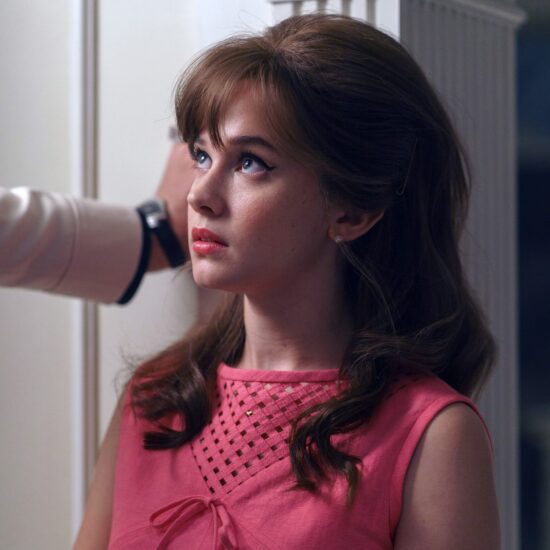
Everyone’s long-standing concerns about the streaming space being a bubble on the verge of popping have proven to be more than warranted over the past few months as two of Hollywood’s ongoing labor strikes have raged on. But with the most recent round of services like Disney Plus, Hulu, Peacock, and Paramount Plus raising their prices — during Hollywood’s ongoing double labor strike, no less — to meet the demand of shareholders for never-ending profits, the time has come for all of us to seriously rethink our relationships with the platforms that have become “the new cable.”
Over the weekend, the Financial Times published a bit of analysis about the current state of streaming that should only come as a surprise to those who haven’t been paying attention to how most of the major Subscription Video On Demand (SVOD) platforms, and many smaller ones like Starz, Shudder, and BritBox, have hiked up their prices in the past year. In 2022, “a basket of the top US streaming services” would run you about $73 per month, but the same assortment of plans will now cost around $87 this fall — a figure that sits just above the $83 price tag the average US monthly cable plan comes with.
The Financial Times piece presumes that you’re subscribing to the most expensive ad-free tiers that Hulu, Max, Netflix, Disney Plus, Paramount, and Peacock offer and doesn’t factor in the cell carrier-subsidized deals that make them more accessible than they otherwise might be. But even though those streamers all offer cheaper tiers, the fact that the entertainment companies behind them want more people spending more money to access their libraries is undeniable and something worth thinking about more deeply — especially as part of conversations about how traditional cable stacks up against the competition.
As much as there is to say about the various ways in which Netflix and the services that followed in its footsteps profoundly disrupted the entertainment industry, the reason the streamers are all getting more expensive is pretty simple. After years of burning through mountains of cash to fill their catalogs with original programming, the big SVOD services are now charging their subscribers more than ever because it’s increasingly difficult to draw in new customers — and because the mere perception of growth is no longer enough to keep their shareholders happy.
Netflix’s recent crackdown on password sharing — which it says resulted in more new signups than cancellations — speaks to how saturated the streaming market has become, as does the noise Disney CEO Bob Iger has made about following suit. But much like the practice of memory-holing films and series just for tax write-offs, the push to goose subscription numbers by imposing new restrictions on old customers also highlights how this late stage of the streaming wars is being defined by the prioritization of profit margins over user experience.
Longtime Netflix subscribers who grew accustomed to using VPNs to sidestep geoblocking restrictions or being able to let friends and family use their accounts with no extra charge have every right to be annoyed by the company’s decision to put an end to those practices. That said, Netflix has also been well within its rights to make these choices. And as a tech company that positioned itself as a streaming leader by taking out multiple millions of dollars in debt, it would be foolish if co-CEOs Ted Sarandos and Greg Peters weren’t doing everything in their power to capitalize on new cash flow opportunities.
Even though the streamers love being seen and celebrated as pop cultural tastemakers, Netflix — like its competition — is a company in the business of making money that owes much of its success to the way consumers have bought into the idea of it being absolutely necessary to keep up with every single new film or show that hits the internet.
That facet of the streaming wars — the way shows like Stranger Things, The Mandalorian, WandaVision, and The Boys became subscription drivers and pop cultural phenomena so big that you couldn’t really avoid hearing about them — is one of the most difficult things for these companies to engineer because of how contingent it is on people’s tastes. To make things even trickier, the success of those streaming hits and others like them was undoubtedly influenced by the degree to which viewers were regularly flocking to social media platforms like Twitter to discuss them — a habit that feels like it’s on the decline in the era of Elon Musk’s X.
Prices will continue to rise until shareholder morale improves
But the idea that people should always be on the lookout for the next big streaming show or original movie for fear of missing out on the hype cycle is something that many of us who subscribe to multiple streamers have bought into — even though it’s never really been true. That kind of thinking is part of how you can end up reasoning that the average traditional cable package is inherently cheaper than opting for streaming services, which one has to choose to sign up for. Diehard film and TV discourse buffs might not want to hear it, but as all of the streamers continue to become increasingly (and perhaps prohibitively) expensive, the option to just unsubscribe is always available and not nearly the difficult choice people might think it is.
Similar to how this phase of the streaming wars has highlighted how companies focus on their own self-interests, it’s also emphasizing how important it now is for consumers to make decisions about which services they’re willing to spend money on and what they really want out of them. In an ideal world, you’d be able to bundle all the services to share with all the people you want for a reasonable price that would ultimately help finance future waves of excellent programming to keep you coming back for more. But we live here, in the real world, where the prices will continue to rise until shareholder morale improves or until the streamers start to see their endless hikes actively drive more subscribers away at an uncontrollable clip.












